We have already reviewed the Samsung Galaxy S21 Ultra and Samsung Galaxy S21 5G– This article specially discuss the camera system of Galaxy S21 Ultra. Samsung combines four cameras in the S21 Ultra. We test each camera at 5000 lux (cloudy sky), 200 lux and 5 lux (night shot).
The main camera
The main camera is a wide-angle module with an aperture of 1.8, 7 mm focal length (26 mm small image) and 108 megapixels. Since nine pixels of the same color always belong to a block (Nonacell technology), it provides 12 megapixels as standard resolution, but can switch to 108 megapixels.
A sensor with 108 megapixels is also in the S20 Ultra, but Samsung has optimized the signal processing. The rating of the wide-angle camera is therefore no longer based on 12-megapixel images, but on 108-megapixel files. That makes the main camera the second best camera of all tests so far. Second best because it can only show off the superiority of its 108 megapixels in a lot of light.
In addition to the sheer resolution and thus much finer detail drawing, the gentler signal coordination is noticeable. Samsung sharpened the 108-megapixel images and sharpened the edges less aggressively than with 12-megapixel images – the former thus appear more natural. However, very complex structures can lead to problems with 108 MP. As the light fades, the 108-megapixel JPEGs degrade faster than the 12-megapixel images. Some fine structures are lost – this is not least a consequence of the noise reduction.
The camera with normal focal length
We test a double zoom on every smartphone, here it is a digital one based on the main camera with 12 megapixels. But the image quality is significantly lower, the images show less fine detail across all light levels. Apparently, the Nonacell sensor structure with its large blocks of nine makes it difficult to digitally zoom.
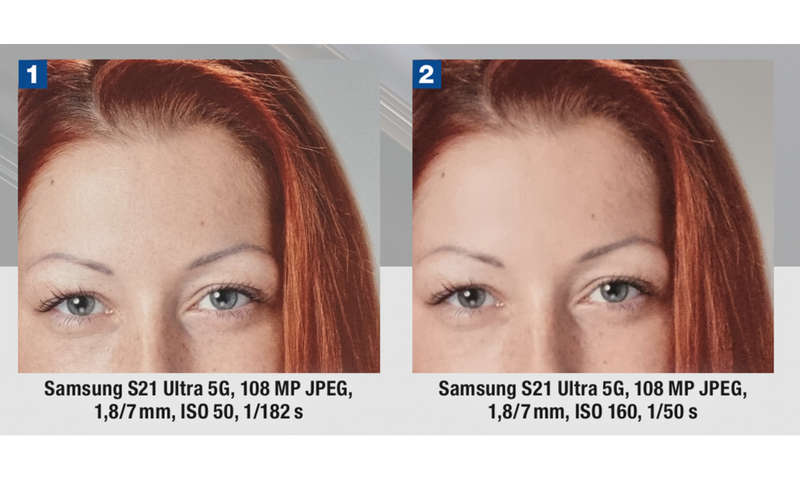
The main camera can record 108 or 12 megapixel JPEGs. The main camera with the same structure was already in the previous S20 Ultra model, but thanks to improvements in signal coordination, the S21 Ultra delivers more detailed images. This applies both to recordings with the maximum possible 108 megapixels (compare pictures 1 and 5) as well as 12-megapixel pictures (compare pictures 3 and 6).
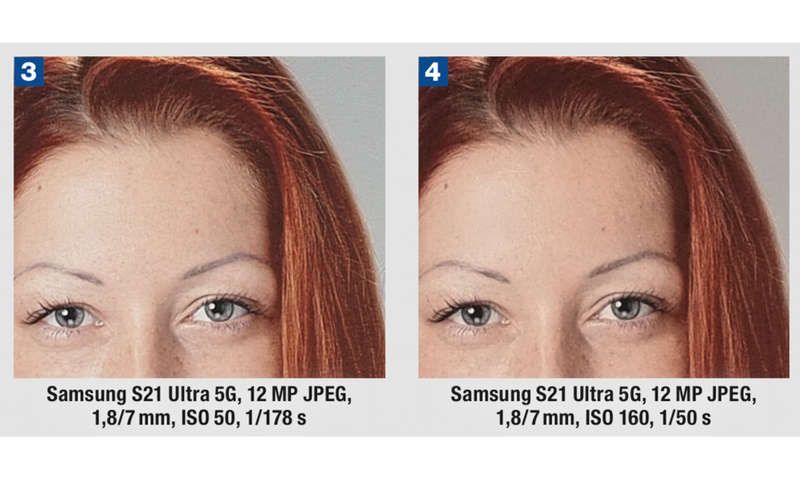
When there is a lot of light, the maximum resolution is the better choice, because it means that the images are more detailed and at the same time more pleasantly coordinated than the photos with 12 megapixels (compare images 1 and 3).
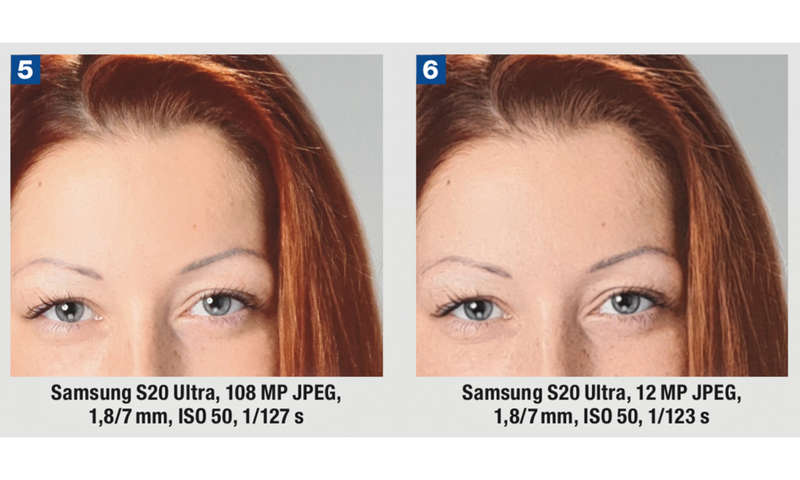
As the light fades, the lead of the 108-megapixel JPEGs melts (compare images 2 and 4): They have more noise and the advantages in resolution are no longer visible in all structures. In the dark, the 12 megapixel images are superior.
camera system of Galaxy S21 Ultra- The telecameras
Samsung installs two telecameras with focal lengths of 70 and 240 millimeters (35mm image values). This is extremely clever, because if there were only the very long telephoto, all zoom levels would have to be generated digitally by the main camera up to 240 mm. That would lead to a very strong drop in performance. Although the two tele modules work with 10 megapixel sensors, you get JPEGs with 12 megapixels – the data is therefore extrapolated moderately. Our tele rating is based on the better test result of the triple zoom 2.4 / 9 mm (70 mm KB) – one of the best tele modules currently available. Of course, with its smaller sensor it does not provide the detailed reproduction of the wide angle. The aggressive signal tuning that is typical of Samsung is more disturbing. It makes the picture crisper, but also more unnatural. As the light fades, signal processing keeps noise and annoying artifacts in check. However, the details decrease.
A 240 mm telephoto (35mm image value) in a smartphone is impressive, but shows its pitfalls in practice. Because despite the image stabilizer, a picture can quickly become blurred. The light intensity of 4.9 also requires longer exposure times. This in turn leads to more camera shake or forces a higher ISO sensitivity, which causes more noise and swallows details.
In the laboratory, the Tele with 4.9 / 30.6 mm shows a lower detail resolution than the other cameras even in a lot of light. The module does not depict many structures adequately at the level of a 10 MP sensor, even under favorable conditions. Noise is not yet an issue, and the artifacts do not disrupt the image. However, the latter increase quickly as soon as the brightness decreases. At the same time, this significantly reduces the resolution again. We recommend using the long telephoto only when there is a lot of light.
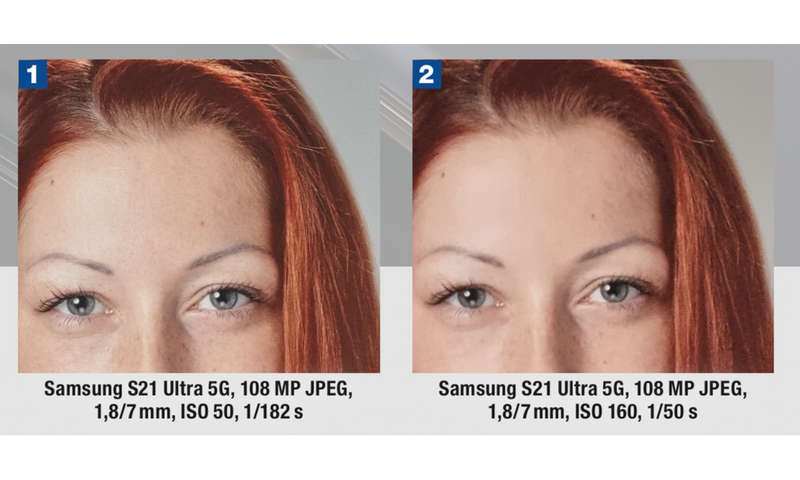
Samsung has increased the tele range. The new triple zoom is one of the best telescopes. Like all other tele modules, it degrades faster with decreasing brightness than wide-angle cameras with larger sensors. With a lot of light it starts on a very good level (compare pictures 1 and 2).
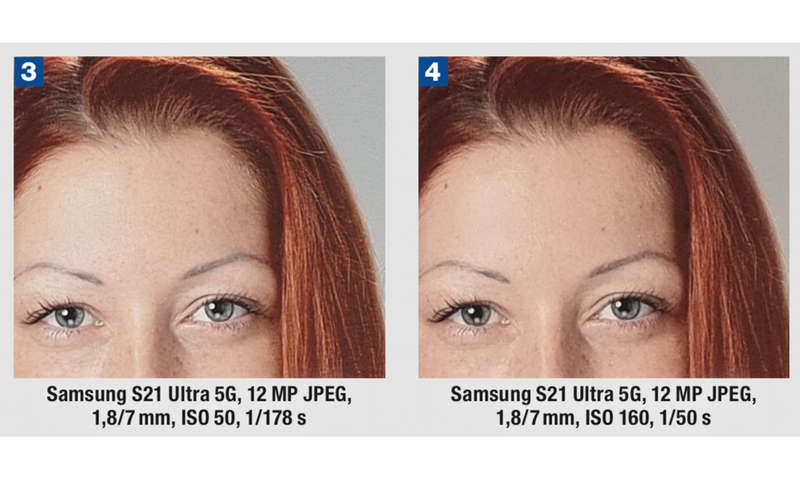
It is qualitatively superior to both the second telephoto with ten-fold zoom and the digital two-fold zoom (pictures 3 and 4). Although the 108 megapixel sensor should provide a sufficient database for a digital double zoom, the Nonacell structure could be the reason for the mediocre result.
The super wide-angle module
The super wide-angle camera with 12 megapixel sensor and 2.2 / 2 mm (13 mm KB) seems to correspond to that of the S20 Ultra. However, Samsung has improved the signal processing a little – with advantages in a lot of light. The camera does not quite come close to that of the Huawei Mate 40 Pro, but overall it is completely convincing.
The signal processing of the S21 Ultra works harder, night recordings are not equalized as well as in the S20 Ultra. We consistently measure a higher resolution and at the same time less noise and artifacts. The veil that was so annoying on the S20 Ultra has disappeared. If the light decreases, the signal processing continues to produce sharp edges, but the image becomes less clean and the noise reduction algorithms break fine structures. We do not recommend the super wide angle for night shots.
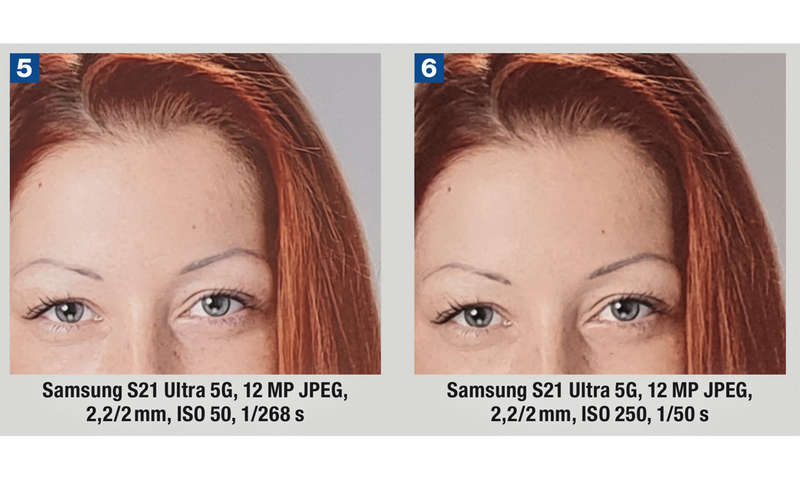
The recordings of the super wide-angle module (pictures 5 and 6) are good. It does not come close to the 20 megapixel module from Huawei, but it leaves many competitors behind. In terms of image quality, it is still quite stable at the beginning of dusk, but it degrades noticeably in the dark.
camera system of Galaxy S21 – conclusion
All in all, the S21 Ultra is one of the best current photo smartphones. In a lot of light, the 108 megapixels of the main camera deliver impressive image quality. If it gets darker, we recommend 12 MP images. The triple tele and the super wide-angle module are also very useful. The optical ten-fold telephoto and the digital two-fold zoom, on the other hand, are among the weaker sides. In addition, almost all of the signal processing is very hard – less would be more here.






